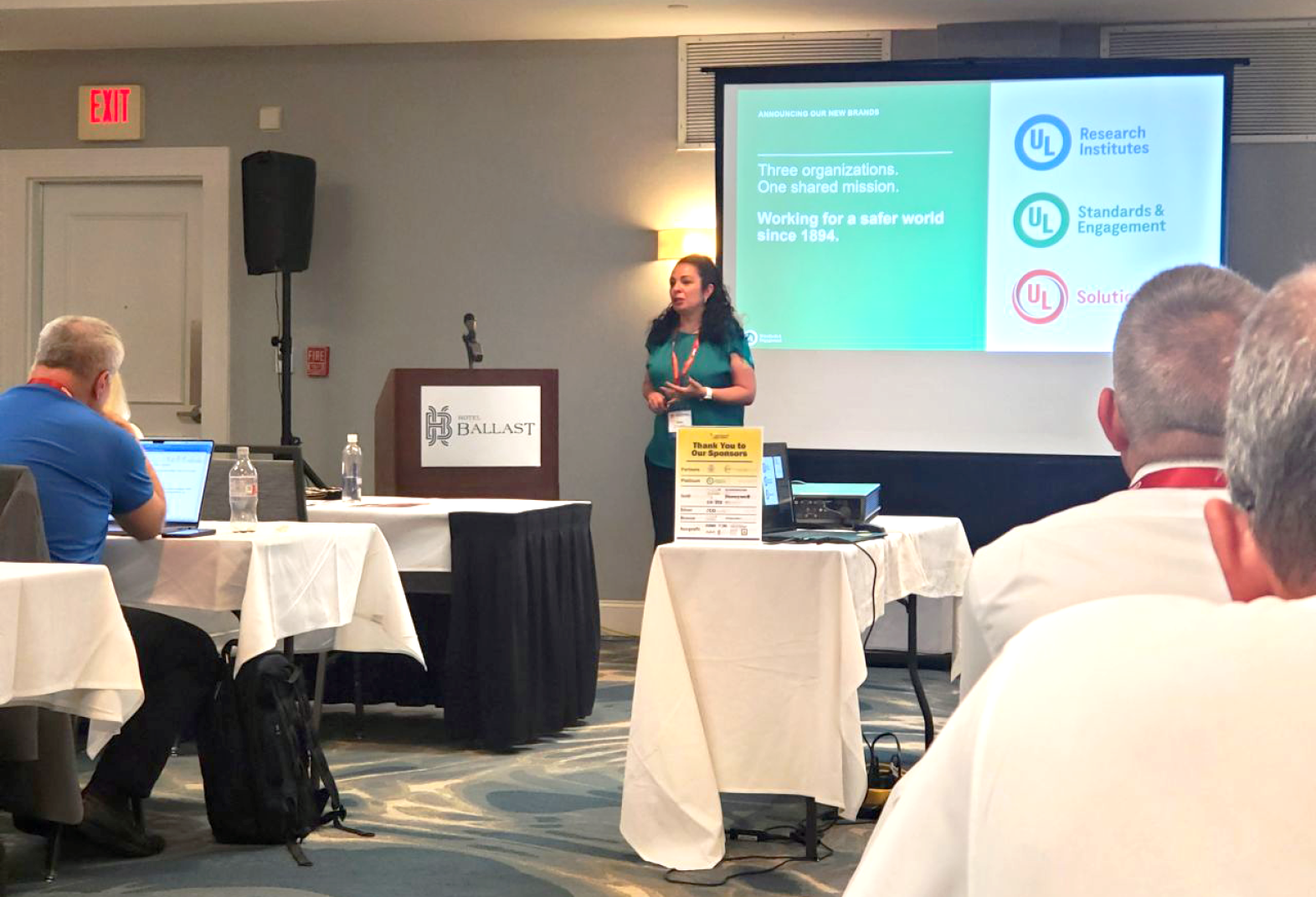
On July 31-August 2, 2023, UL Standards & Engagement served as a platinum sponsor of the 2023 CO Safety Summit of the National Carbon Monoxide Awareness Association, held in Wilmington, NC. The three-day event was dedicated to education, research, case studies, data, new technologies, and best practices for prevention and detection of carbon monoxide poisoning.
During the summit, fire marshals and fire service professionals, carbon monoxide professionals, and community risk reduction experts from around the world presented on topics including emergency response; science and innovation; surveillance data; and codes, standards, and regulations. ULSE Director of Standards Programs Diane Haithcock presented on our safety standards that have been proven to effectively mitigate CO poisoning, and she also encouraged summit participants to share their expertise by getting involved in the ULSE standards development process.
"Estoy muy orgulloso de haberme unido a los expertos en primera línea en la lucha contra la intoxicación por CO, y profundamente obligado a abordar esta cuestión después de hablar con aquellos que han perdido a sus seres queridos", dijo Haithcock. "ULSE está trabajando para ayudar a proteger a los consumidores de la intoxicación por CO con normas para generadores portátiles y alarmas de monóxido de carbono, y confiamos en la aportación y experiencia de estas personas para ayudar en el desarrollo continuo de estas normas."
In 2022, the U.S. Consumer Product Safety Commission announced the publication of a staff report that determined UL 2201, the Standard for Safety for Carbon Monoxide (CO) Emission Rate of Portable Generators, would avert nearly 100% of deaths from carbon monoxide poisoning in testing scenarios that were based on CPSC data of fatal incidents with non-compliant generators in enclosed spaces. In order to comply with the requirements in this Standard, a portable generator must produce a low emission rate, and it must also be equipped with a CO sensor that will automatically shut the unit off if certain concentrations of CO are detected.

Additionally, UL 2034, la norma para detectores de monóxido de carbono de una o varias estaciones, requires CO alarms for homes and vehicles to report at carbon monoxide levels below those that cause a loss of ability to react to dangerous CO exposure – to help ensure occupants can escape to fresh air before the CO accumulation reaches deadly levels. The Standard also requires CO alarms to sound an audible end-of-life tone (indicating the need for device replacement) that is different from the alarm signal.
If you would like to contribute your expertise toward the ongoing development of safety Standards in the fight against CO poisoning, tómese un momento para saber cómo puede participar.